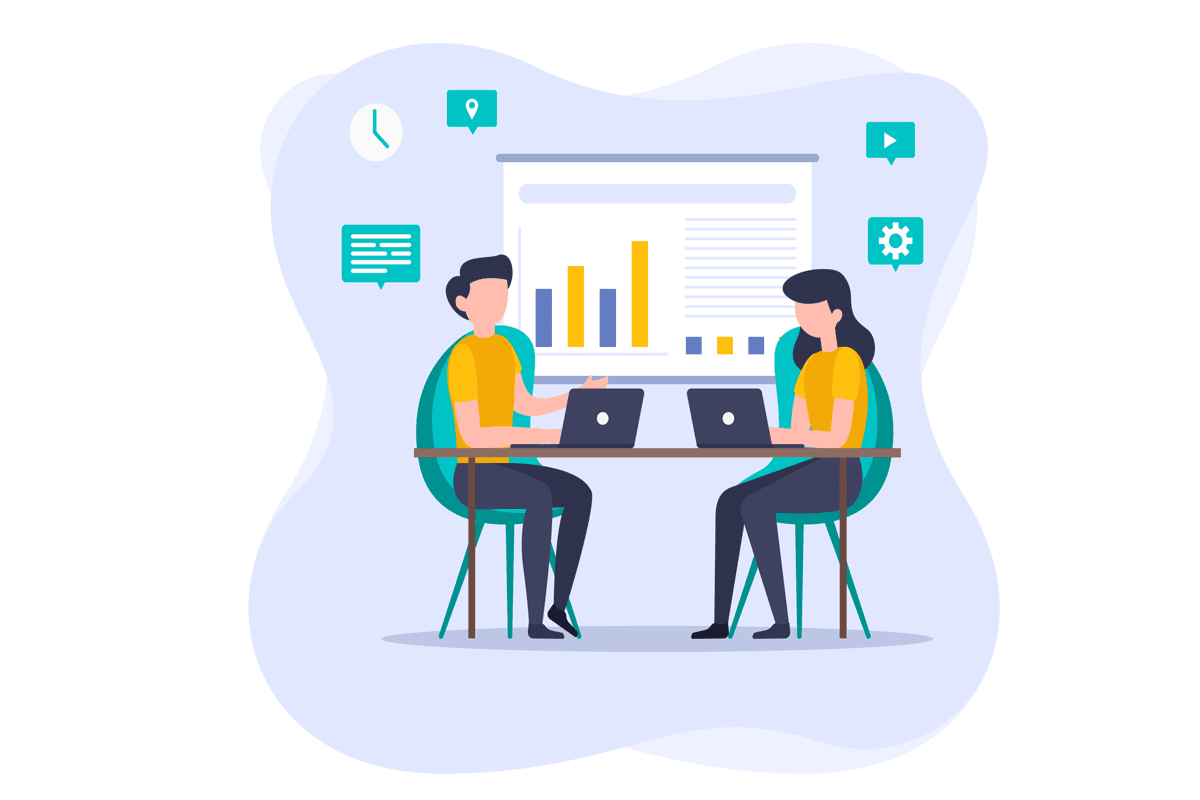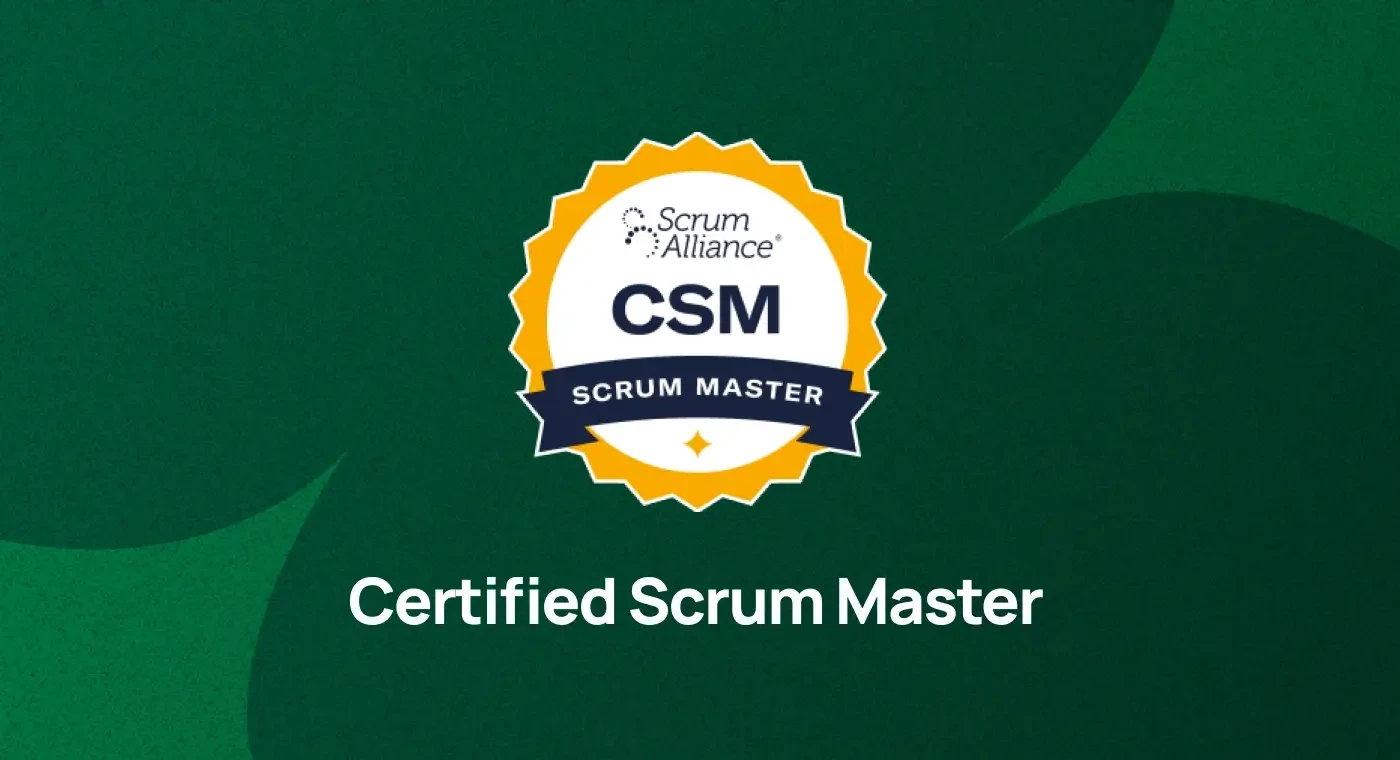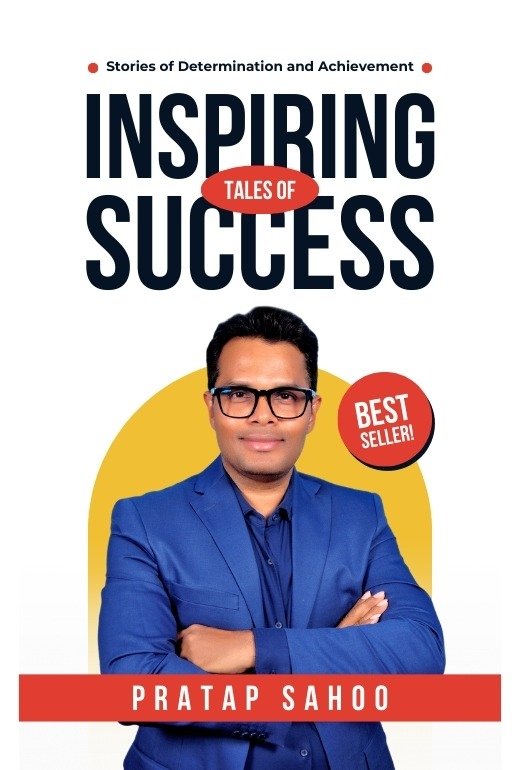Currently Empty: ₹0.00
Agile Management
Kanban Interview Questions and Answers
A product owner in Scrum team who is responsible for the outcome of the project. He maximizes the value of the product by managing and optimizing the product backlog. A product owner’s key responsibility is to define user stories and create a product backlog. No matter whether you are a beginner or an intermediate or an experienced product owner, this write-up will aid you in increasing your confidence and knowledge of product owner. The questions below are divided into various topics catering to product owner. They range from story grooming, user story splitting and estimation, burn down charts and more. Also, this guide provide step-by-steo explanations for every question which will help you understand the concepts well. With Product Owner interview questions, you can be confident about your preparation for the upcoming interview.
Question 1-5
What is Kanban?
A visual workflow management method used to visualize, limit, and improve work-in-progress.Who developed Kanban?
Initially used by Toyota (Taiichi Ohno), modern Kanban was adapted for knowledge work by David J. Anderson.What are the 3 basic principles of Kanban?
Visualize the work, Limit WIP (Work in Progress), and Enhance flow.What is a Kanban board?
A visual tool used to visualize workflow and manage tasks.What are the common columns in a Kanban board?
To Do, In Progress, and Done.
Question 5-10
What is WIP Limit?
A restriction on the number of tasks allowed in a workflow stage at a time.How does Kanban differ from Scrum?
Kanban is continuous flow without timeboxing, while Scrum works in iterations (Sprints).What is the purpose of visualizing work in Kanban?
To improve transparency and identify bottlenecks.Is Kanban an Agile methodology?
Yes, it aligns with Agile values, though it’s not a full framework like Scrum.What is flow in Kanban?
The smooth and continuous movement of work through the system.
Question 10-15
What is a swimlane in Kanban?
Horizontal lanes used to categorize or separate work types or teams.What is a service class in Kanban?
Categorizes tasks based on urgency or priority, e.g., expedite, fixed date.What is lead time?
Time from when a work item is requested to when it is delivered.What is cycle time?
Time from when work starts on an item until it is finished.How is Kanban implemented?
Start with what you do now, visualize workflow, apply WIP limits, measure and improve flow.
Question 15-20
Does Kanban have roles like Scrum?
No prescribed roles, but roles can exist from existing structure.What is pull-based workflow?
Teams pull work as capacity becomes available rather than push tasks.What is the purpose of limiting WIP?
To avoid multitasking, reduce overload, and increase focus.What tools are commonly used for Kanban?
Trello, Jira, Kanbanize, Monday.com, Azure DevOps.What is a bottleneck in Kanban?
A stage in the workflow where work gets stuck or delayed.
Question 20-25
What is a Kanban card?
A visual representation of a task on the board.What is the Kanban cadence?
Regular reviews: daily standup, replenishment, delivery planning, and retrospectives.Is planning done in Kanban?
Yes, Kanban uses on-demand planning and replenishment meetings.How do you measure performance in Kanban?
Using metrics like cycle time, throughput, and lead time.What is throughput in Kanban?
The number of work items completed in a given period.
Question 25-30
What is aging WIP?
Work items that remain in the same stage longer than expected.Does Kanban require a fixed team?
No, but stable teams are beneficial.Is estimation mandatory in Kanban?
No, estimation is optional.What is a blocked item?
A task that cannot proceed due to an issue.How do you handle blocked items?
Use visual indicators (e.g., red stickers), remove blockers quickly.
Question 30-35
Can Kanban be used for support teams?
Yes, it’s ideal for maintenance, support, and operational work.What is the difference between cycle time and lead time?
Lead time includes wait time before starting; cycle time only includes active work time.What are feedback loops in Kanban?
Meetings like daily standup, service delivery review, and operations review.What is the primary goal of Kanban?
Improve efficiency, predictability, and delivery flow.What is the Kanban Method?
A change management method that includes principles and practices for managing and improving flow.
Question 35-40
36. How do you identify bottlenecks using Kanban?
By analyzing WIP levels, cycle time, or using a cumulative flow diagram.
37. What is a swimlane in a Kanban board?
A horizontal lane used to categorize work items (e.g., by team, priority, or type).
38. What is a blocker cluster?
A pattern or trend of repeated blockers in the workflow.
39. What is the ideal WIP limit?
It depends on the team size and workflow but should balance productivity and flow.
40. Can Kanban be used in support and operations teams?
Yes, it's ideal for such teams due to its flexibility and continuous flow.
Question 40-45
What is the service delivery review?
A meeting to assess flow efficiency and system performance.What is slack time in Kanban?
Unutilized time that helps with flexibility and handling variability.Is Kanban used only in software development?
No, it’s applicable in IT, marketing, HR, and operations.What is a replenishment meeting?
A session to add new work to the board as capacity becomes available.What is Little’s Law in Kanban?
Avg. Lead Time = (WIP) ÷ (Throughput)
Question 45-50
How often do you do retrospectives in Kanban?
Periodically, not timeboxed; based on need.What is a flow efficiency metric?
Ratio of value-added time to total lead time.What are blockers and defects?
Blockers stop work; defects are issues that require fixing.Can Kanban be combined with other frameworks?
Yes, it’s often combined with Scrum (Scrumban) or SAFe.What is Scrumban?
A hybrid method combining Scrum structure with Kanban flow.
Question 1-5
How do WIP limits help identify bottlenecks?
When WIP exceeds a limit, it signals a process delay or blockage.What is the impact of reducing WIP on flow time?
Reducing WIP generally decreases cycle time and improves flow.What are the six general Kanban practices?
Visualize, Limit WIP, Manage flow, Make policies explicit, Implement feedback loops, Improve collaboratively.What is cumulative flow diagram (CFD)?
A chart showing the flow of work items through states over time.What is the difference between workflow and value stream?
Workflow is the operational process; value stream is the end-to-end delivery of value.
Question 5-10
How do you handle changing priorities in Kanban?
Prioritize at the commitment point; re-order before commitment is made.What are some advanced metrics in Kanban?
Flow efficiency, blocker clustering, demand/capacity analysis.What is a service level expectation (SLE)?
Forecasted time by which a task is expected to be completed.What is the benefit of visual policies in Kanban?
Helps maintain consistency, accountability, and transparency.How do you manage dependencies in Kanban?
Visual indicators (tags, links), synchronized boards, coordination meetings.
Question 10-15
What is deferred commitment?
Making decisions at the last responsible moment.How do you manage urgency in Kanban?
Use expedited swimlanes or classes of service.What are classes of service in Kanban?
Expedite, Fixed Date, Standard, Intangible – each with different policies.What are blockers vs impediments?
Blockers prevent task progress; impediments slow it down but may not fully block.What is risk management in Kanban?
Prioritize based on likelihood and impact, handle via classes of service.
Question 15-20
How does Kanban support continuous improvement?
Regular metrics review, feedback loops, and adaptive changes.What is a replenishment trigger?
A signal (like WIP limit opening) that prompts new work to be added.How does Kanban handle forecasting?
Using historical cycle time and throughput metrics.What are the benefits of Kanban for non-software teams?
Improved visibility, workload balance, better communication.What is the relationship between Kanban and flow time?
Better-managed flow leads to predictable and lower flow time.
Question 20-25
How do you use Kanban to reduce multitasking?
WIP limits force team members to focus and finish tasks.What is demand shaping in Kanban?
Adjusting incoming requests to balance workload and capacity.What is context switching and how does Kanban reduce it?
Switching between tasks reduces efficiency; WIP limits prevent it.How do you perform root cause analysis in Kanban?
Use blocked items report, aging WIP, and cumulative flow diagrams.What is lead time distribution chart?
Histogram showing how long tasks take to complete.
Question 25-30
How do you use Kanban to reduce multitasking?
WIP limits force team members to focus and finish tasks.What is demand shaping in Kanban?
Adjusting incoming requests to balance workload and capacity.What is context switching and how does Kanban reduce it?
Switching between tasks reduces efficiency; WIP limits prevent it.How do you perform root cause analysis in Kanban?
Use blocked items report, aging WIP, and cumulative flow diagrams.What is lead time distribution chart?
Histogram showing how long tasks take to complete.
Question 30-35
Can Kanban be used for support teams?
Yes, it’s ideal for maintenance, support, and operational work.What is the difference between cycle time and lead time?
Lead time includes wait time before starting; cycle time only includes active work time.What are feedback loops in Kanban?
Meetings like daily standup, service delivery review, and operations review.What is the primary goal of Kanban?
Improve efficiency, predictability, and delivery flow.What is the Kanban Method?
A change management method that includes principles and practices for managing and improving flow.
Question 35-40
What is the benefit of using avatars or initials on cards?
Shows task ownership and responsibility clearly.What are ticket aging alerts?
Notifications when tasks exceed expected aging threshold.What is the main purpose of a Kanban Replenishment Meeting?
To decide which items to pull into the “To Do” column.What is throughput variability?
The inconsistency in the number of completed items over time.How do you calculate flow efficiency?
(Value-added time / Total lead time) × 100.
Question 40-45
How do you manage escalations in Kanban?
Highlight on the board, expedite swimlane, or fast-track via policies.What is the impact of changing WIP limits frequently?
Can lead to instability; best to experiment and stabilize.What’s the difference between SLE and SLA?
SLE = forecast; SLA = contract or promise.What is queue replenishment delay?
Time between a task becoming ready and being pulled in.How can Kanban help with team burnout?
WIP limits reduce overload and allow for focused work.
Question 45-50
What is a delivery rate?
Average number of items delivered over a set time period.How does aging WIP help improve predictability?
Identifies items at risk of becoming late or stale.What is upstream Kanban?
Visualization and management of work before commitment point.What is downstream Kanban?
Covers work after commitment, through to delivery.What is ticket splitting in Kanban?
Breaking down large items into smaller ones to improve flow.What is a flow debt?
Accumulated inefficiencies that degrade overall system flow.What is probabilistic forecasting in Kanban?
Using data distributions to predict future outcomes.How do you apply Kanban in SAFe?
Kanban is used at Program, Solution, and Portfolio levels.What is the difference between replenishment and commitment?
Replenishment = choosing work; Commitment = starting work.How do you track work aging?
Visual indicators or metrics dashboards.What is the benefit of token limits in Kanban?
Forces prioritization and prevents overload.What are common anti-patterns in Kanban?
Ignoring WIP limits, skipping feedback loops, inconsistent updates.What are core flow metrics in Kanban?
Lead Time, Cycle Time, Throughput, Flow Efficiency.Can you scale Kanban?
Yes, via Portfolio Kanban, Service-oriented Kanban, or Flight Levels.
- What is the Flight Levels model?
A strategy for scaling Kanban across teams, operations, and enterprise.
Question 1-5
What is STATIK in Kanban?
Systems Thinking Approach to Introducing Kanban – a structured way to design a Kanban system.How do you use Monte Carlo simulations in Kanban?
To predict delivery dates or forecast work completion.What is the Theory of Constraints and its link to Kanban?
Identify the bottleneck (constraint) and focus improvements there to increase throughput.What is Kanban Maturity Model (KMM)?
A model that guides organizational maturity using Kanban principles.How does Kanban support organizational design?
Helps define services and flow across organizational boundaries.
Question 5-10
What is an obeya room and how is it used with Kanban?
A central collaboration space that visualizes flow and performance for decision-making.What is a capability flow?
The movement of business capabilities through value streams.What is demand-capacity balancing in Kanban?
Matching incoming work demand with team/service delivery capacity.How do you manage multiple service classes effectively?
Define explicit policies, review metrics per class, and align with risk tolerance.How do you apply lean economics in Kanban?
Optimize flow for cost-of-delay and flow efficiency.
Question 10-15
What is Enterprise Services Planning (ESP)?
Kanban’s approach to strategy, forecasting, and portfolio planning.How do you design feedback loops in large-scale Kanban?
Use multi-level reviews (Ops, Service, Strategy), and layered metrics.What is kanban token economy?
Using physical or digital tokens to limit WIP across distributed systems.How do you model dependencies in a multi-board Kanban system?
Use linked cards, mirrored items, and coordination swimlanes.What is sensitivity analysis in Kanban forecasting?
Analyzing how variation in inputs affects forecasting outcomes.
Question 15-20
What is the impact of arrival rate variability on throughput?
Increases unpredictability and requires buffer management.What is the upstream demand shaping mechanism?
Filters or reformats demand to match system capability and goals.How do you track and reduce flow debt in an enterprise Kanban system?
Use delay metrics, trend analysis, and retrospective-driven backlog cleanups.How do you manage cross-functional flow in Kanban?
Use service boundaries, defined interfaces, and synchronized planning.How do you calculate throughput reliability?
Use percentile-based charts (e.g., 85th percentile confidence for delivery).
Question 20-25
What is the difference between Flow Time and Sojourn Time?
Sojourn time includes waiting in queue; flow time focuses on movement through stages.How do you integrate OKRs with Kanban systems?
Align Kanban work items with objectives and track key result progress.What’s the role of qualitative risk profiles in Kanban?
Help decide classes of service based on uncertainty and risk.How can AI enhance Kanban analytics?
AI can predict bottlenecks, optimize WIP, and improve forecasting.- How do you sustain high maturity in enterprise-level Kanban adoption?
Governance, leadership buy-in, regular feedback, and culture of experimentation.
Description
The Product Owner is a pivotal role in an Agile team, serving as the primary liaison for stakeholder needs and representing the team’s goals and progress. They are solely accountable for maintaining the quality and value of the team’s output and own the responsibility for managing the product backlog.
Demand for skilled Product Owners is strong across industries. A quick look at job postings shows top companies actively seeking candidates for this role. Currently, there are over 300 open Product Owner positions on LinkedIn in Spain alone. Research indicates that the average annual salary for a Product Owner in the United States is around $105,158, while in India, the average salary is approximately ₹9,97,286 per year, according to Indeed.








